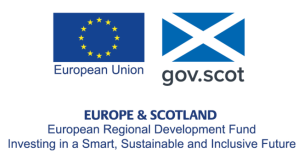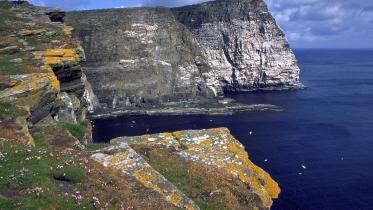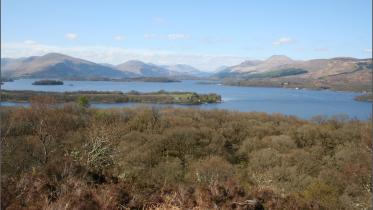The Coast that Shaped the World
22 Sept 2020
In conversation with Kelly Morrison – The Coast that Shaped the World.
The Coast that Shaped the World is one of our Natural and Cultural Heritage projects. It is being led by West Highland College (University of the Highlands & Islands). The project will create a website, app and programme of digital exhibitions along the west coast of Scotland narrating the maritime stories of coastal communities. These approaches will convey how maritime, cultural, and natural heritage helped to shape the world. Local stories will be mapped and gathered, celebrating local successes and inspiring potential tourists
We sat down with Project Officer, Kelly Morrison, to find out a little more about the project.
Kelly, can you tell us a little bit about what you hope the project will achieve?
This is a community-led project which brings together communities from Arran to Lewis, transcending the miles between them and highlighting how closely all of these communities’ pasts, presents and futures are intertwined. The aim is to attract people to come to the less-visited areas of the west coast of Scotland through the provision of high-quality visitor experiences that help to sustain local communities, grow and increase local businesses and protect and share our rich cultural heritage.
Tell us how the idea for the project began.
The project emerged from an idea through the West Coast Marine Tourism Group (WCMTC) – now West Coast Waters. The project idea stemmed directly from a scoping study undertaken in 2018 by the WCMTC, which engaged businesses and communities, through local partners, in those 18 DMO areas in order to identify gaps in coastal tourism provision and opportunities to enhance the visitor experience.
This work revealed that there is a plethora of stories to be told and interpreted. These are linked to the coastal and maritime environment, and show that the cultural heritage and spread of communities across the west coast is directly related to the maritime environment. A key aspect of this is that the seaways of the west coast used to be the highways, and many cultural features such as castles and prehistoric monuments are located very close to the sea and along the coastline - each have rich stories to tell. What was also revealed is that despite the west coast having an outstanding marine environment with numerous international and national designations across the area, and important cultural and built heritage features, there is very little on the ground or immediately accessible digital interpretation to explain this to visitors and enhance their quality of experience of the destination.
Who are the people behind the project?
- West Highland College UHI - Jamie Brown – Project Manager, Kelly Morrison – Project Officer
- West Coast Waters initiative – working in collaboration with DMOs and the team supporting the initiative.
- Project Co-ordinators – Carron Tobin (ruralDimensions) and Graham Hogg (Lateral North)
- Web/App developer – Whereverly
- Installations creator – Lateral North (support from Whereverly, Rural Dimensions, and Soluis Heritage)
- Match funders – West Highland College UHI and CalMac ferries
All in all we have a varied project team with a wealth of experience in digital technologies, heritage, marketing and tourism development who are all excited and energised to collaborate and get going on delivering the project.
What element of the project most excites you?
The collaborative nature of the project, with the organisations, communities and contractors involved, sharing the intertwined culture and heritage of the west coast, and also what is unique to specific places. That combination and also the innovative, digital approach that will be taken to looking at heritage at this point in a changing society, including the adaptations and story of COVID-19 itself, and leaving a legacy for the future with the creative outputs and the continuation of story gathering and sharing.
The Natural & Cultural Heritage Fund is part of the Scottish Government's current European Regional Development Fund (ERDF) programme, which runs through to 2023. This is one of two ERDF Strategic Interventions led by NatureScot - the other is the Green Infrastructure Fund.
You can follow the European Structural Funds blog for ESF activities, news and updates. For twitter updates go to @scotgovESIF or use the hashtags #ERDF and #europeanstructuralfunds




